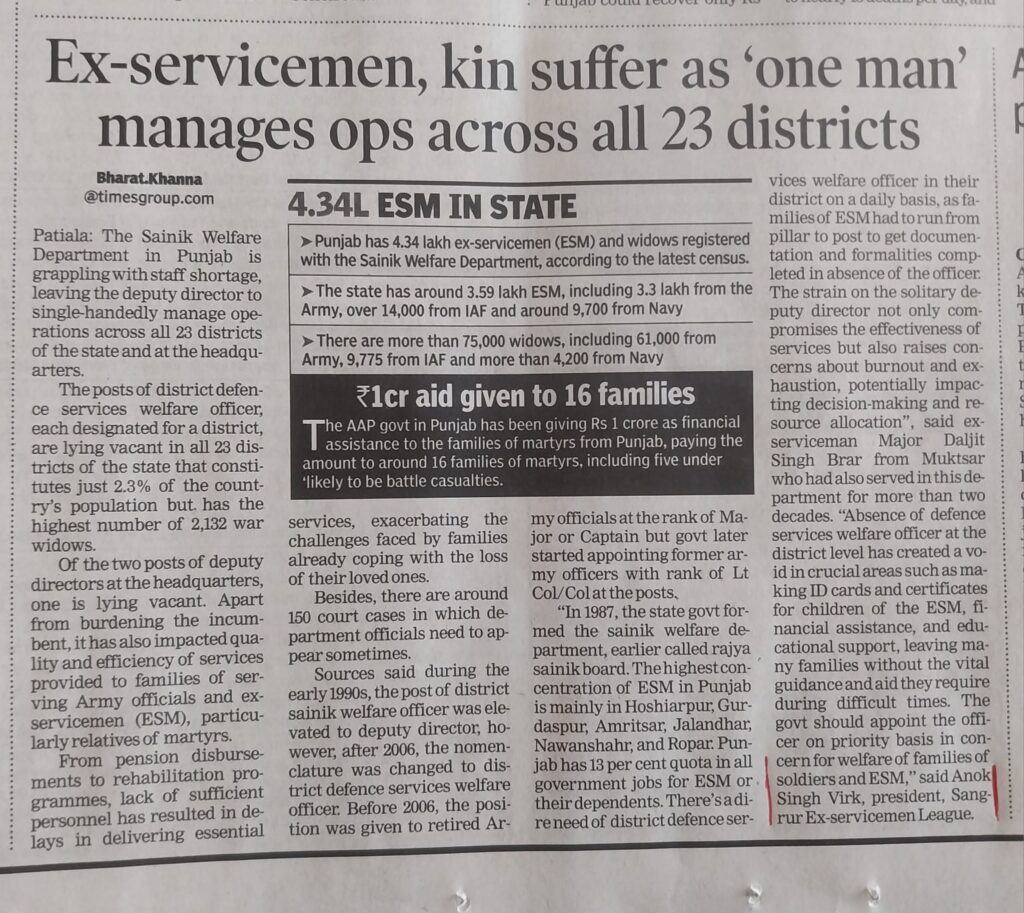
Current Events :











“SIRS, I AM DISILLUSIONED AND DEVASTATED”:
LT. GENERAL VIJAY OBEROI. Tuesday, February 2, 2016
Dear Chiefs,
Since the evening of 29 Jan 2016, I have been fighting an inner battle on whether to share my dismay and disappointment with the three worthy Chiefs of the armed forces of our country, the same armed forces that have not just brought glory to the nation since our independence, but have secured the nation from both external and internal threats. After a great deal of introspection and soul-searching, I have come to the conclusion that I must apprise you of my misgivings, which incidentally are shared by the majority of my brother and sister officers, both serving and retired.
Let me commence with the absurd spectacle of 29 Jan 2016, when a solemn ceremony – ‘Beating of Retreat’ was reduced to a ‘tamasha’ of sorts, for want of a better word!. You, the custodians of all things military and the wisest amongst us all (that is why you are the Chiefs of our fine military), have unfortunately set a deplorable precedence by the manner the sacred, ceremonial and military pageantry ‘Beating of Retreat’ this year was conducted. I need not remind you worthies that traditions are the core of the Indian Military and flouting them on account of pressures/ requests from political and other bosses amount to letting down the troops whom you lead and who are always ready to even sacrifice their lives at your orders, but please do note that they will do so only if the orders are legitimate and legal and not to please your bosses or others.
It would be churlish of me to remind you of why the ‘Beating of Retreat’ Ceremony is performed and what the traditions and sequencing are that must be observed; I am quite sure that your staff dealing with the subject would have done so, or would do so when this epistle of mine appears in the public domain. Suffice to highlight only three of the ‘wrongs’ (or shall I call them blunders) that manifested themselves in this year’s ceremony.
Firstly, our bandsmen, besides playing martial music, are also adept at playing symphonies (both western and Indian), but there is a place and occasion to play them. By all accounts, a ‘Beating of Retreat’ ceremony is not one of them! I do hope we do not add more colour to it in future on account of directions from the higher ups and ask them to wear dhotis and kurtas to add authenticity to the proceedings!
Secondly, while some of our bandsmen, particularly drummers do get into the spirit of the moment and start swaying, if not gyrating, as they play, but is it forced on those poor boys or they do so automatically, as the spirit moves them? It was really distressing to see some of the drummers, specially from the Naval Band, breaking out into some sort of a bhangra or akin to it , either in their enthusiasm or to impress their Chief! Maybe, the proximity to Bollywood may have inspired them!
At this rate, we may in future years witness dances to showcase our wide variety of dance forms, or God forbid gyrations by the Bollywood ‘nautanki’ crowd and rappers to liven up the staid proceedings!
Thirdly, I was quite shocked to see police bands amidst the military bands during the ceremony. I have no idea why you forgot or you agreed to these police bands taking part in this highly exclusive military spectacle. I have nothing against the police, but the way they are being permitted to participate in military ceremonies spells another doom for the Indian Military. I am all for egalitarianism, but the line must get drawn at the appropriate place. I or my comrades cannot draw such a line; it is only you who can do so. I do hope that you will do that, unless you have reached so far in the “Yes Sir, Three Bags Full Sir” syndrome that you feel you have no choice but to conform!
Let us move on then, for having stuck my neck out already, I might as well go the whole hog. Since we have been talking about ceremonials and pageantry associated with the month of January, let me draw your attention to the Republic Day Parade, which is so meticulously organized by Headquarters Delhi Area, but somewhere the plot is lost when the netas and the bureaucrats gather all the praise and the sweat, energy and time spent on such a major military event is usurped by them. Hallelujah, why has the military become so subservient?
For the first time since I took part in the parade, as a cadet from the National Defence Academy (NDA) in 1959 I think, I was shocked to see no participation by the veterans, who have sacrificed their lives and limbs for the nation. Are they of no consequence? Are they spent forces (khali Kartoos), as far as the nation is concerned. Let me rub it in, because you as Chiefs of both serving personnel and veterans agreed to have a shoddy cardboard tableau marked OROP, trying to show the false magnanimity of this self-serving government, which having gone back on its word to sanction OROP in its totality and parliamentary approved definition, has reneged at the behest of those darling blue-eyed boys, also known as the bureaucrats.
Do you think the people of India will go along with such a fraud! You may be fully committed to your bosses, but why have you become such ‘Ji Hazoors’ that you have now forgotten even your comrades in arms, who incidentally were at least partly responsible for assisting you to reach the present high appointments you hold!
Three more small points, as I have already vented most of my ire. I fail to understand why it is our valiant jawans who are press-ganged into laying mats on the Rajpath so that the government (read the Prime Minister) can showcase mass yoga to the world. What do the huge armies of civil servants do?
While it is good to showcase women power in the military, it is wrong for lady officers to be made to carry rifles or IAF officers with empty holsters in the squads while participating in the Republic Day Parades. Since we do not have women enrolled as the rank and file so far, let lady officers lead squads of their regimental/corps contingents, as male officers do.
My last point relates to a group photograph taken at the ‘At Home’ of the Army Chief that has gone viral on the e-mail circuit and on the social media that shows the three Chiefs subordinated to the back seat, during their own ‘At Home’, while the netas, both present and past are reposed on comfortable chairs in the front row. Have the armed forces been reduced to such a state on their own function? See, how the mighty have fallen! Hallelujah and Jai Ho simultaneously!!!
Let me end this epistle on an optimistic note by conveying my best wishes to you Sirs. I do hope you will reflect on what an old soldier feels and perhaps carry out at least some of the suggested changes so that our sacred military traditions are preserved and not sacrificed at the altar of expediency. Hopefully, your legacy would not be repeated in future by your successors.
Jai Hind! ( Added From Pilot Swamiji) PS : Remarkable eye opener post by the worthy ,steadfast, highly decorated ,War handicapped with loss of right leg in 1965 war,Rose to be Cin C & VCOAS , Accomplished veteran in LT.Gen Vijay Oberoi for forlorn retired LT. Gen politically picked CDS after Martyred Gen.Rawat now & Three Service Chiefs.However, all falicies continues with IAF Officers with empty holsters without weapons & 2024 parade made a women lead laughable Spectacle for political gains.Any women notable military commander of merit in present or last known ancient history of the world ? Let women excel in their natural anatomy conducive fields & spare Defence Forces !! Pilot Swamiji…Jai Hind Jai Bharat,Bharat Mata ke jai 🇮🇳🇮🇳🇮🇳*
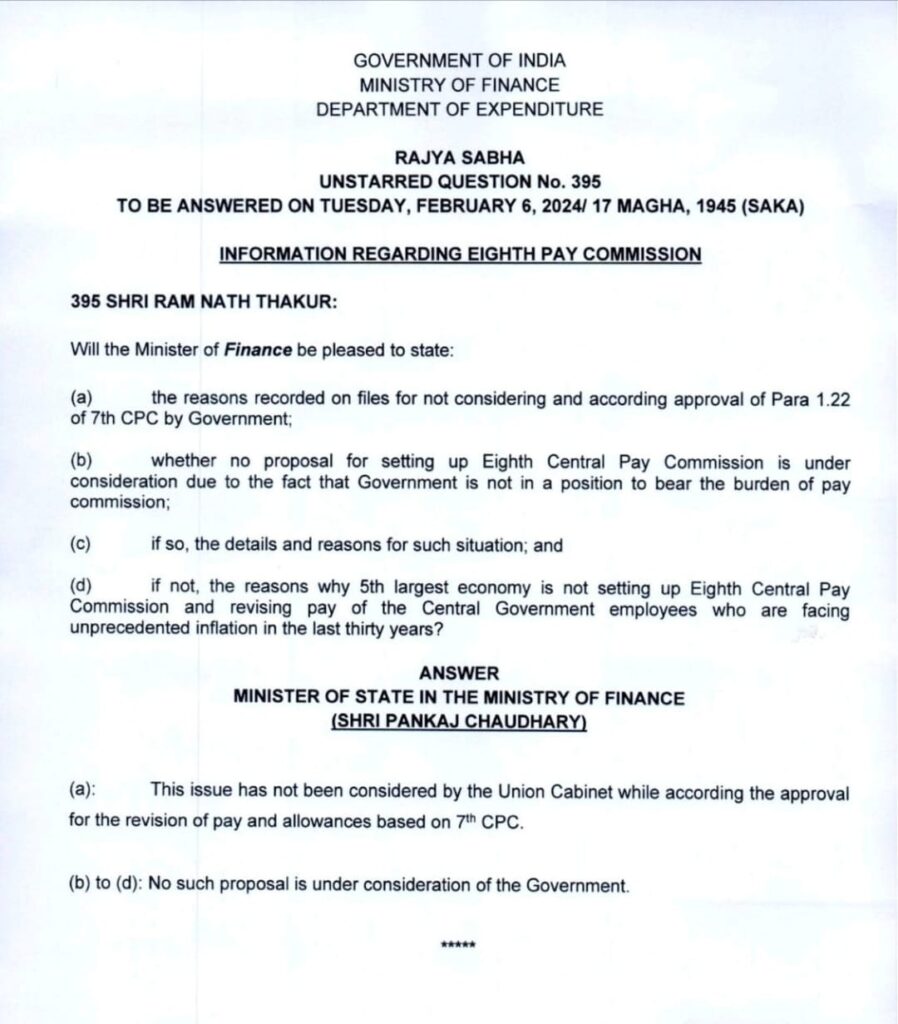
विश्व की अर्थिक महाशक्ति बनने जा रहा भारत के वित्त मंत्री ने कहा है न तो 8वां वेतन आयोग गठित होगा और न ही 7 वें वेतन के अनुसार 50% DA मूल वेतन में मर्ज होगा। क्योंकि भारत सरकार वेतन का बोझ उठा पाने की स्थिति में नहीं है।
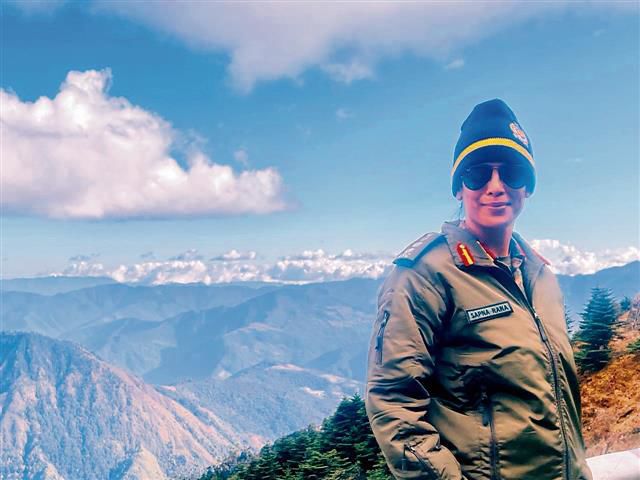
Shamsher Chandel
For a girl living in the backwaters of Himachal Pradesh, to get a mere government job without sifarish is quite an accomplishment. Growing up in the 1980s, little Sapna Rana didn’t have recourse to sifarish — but her appetite to make it big was immense. True to her name, Sapna Rana started dreaming young.
While studying at a government school in Badhlag near her village Bhawanipur in Solan district, she quietly started charting the course of her career her mind, even as children her age were happy just playing. From there to becoming the first woman from Himachal Pradesh to command a battalion in the Indian Army, Col Sapna Rana has come a long way.
Sapna’s mother Krishna Thakur, a homemaker, says with pride: “Of my three children, two sons and a daughter, she was the most driven — good at studies, and unrelenting.” “We’re from a small village, and never even imagined that our daughter could settle down beyond our village or the panchayat at most,” she adds. “But after Sapna did her 10th, she insisted that she would go to Solan for higher studies with her brothers.”
Luckily for Sapna, her father — a schoolteacher — and mother granted her wish, and she moved to Solan, living in a suburb, Saprun. “There she used to cook food and walk back part of the way from college to save money,” says Krishna. “When at the village, she would do all the chores women used to do back then — chop cattle-feed, milk the buffalo, stack a pile of chapatis, and much more. From there to becoming a Commanding Officer (CO) in the Army — we couldn’t have asked for more!” Col Sapna relives the days her dreams got wings. “After graduating from Government College in Solan, I got admission at the Himachal Pradesh University for an MBA degree in Shimla. I started preparing for the Civil Services but midway, I appeared for the Combined Defence Services exam and was selected for training at the Officers’ Training Academy in Chennai.”
After clearing the Service Selection Board (SSB) hurdle, she joined the Officers Training Academy in Chennai in 2003 and was commissioned as a Lieutenant in the Indian Army in 2004.
Krishna adds, “Before she wrote the exam, she went for a seven-day coaching class to Chandigarh. She appeared for the exam and made it.”
The 41-year-old officer, currently commanding an Army Service Corps (ASC) battalion in the Northeast, is married to an Army officer and the couple have a daughter.
Col Sapna has excelled in sports, winning gold medals during training in cross-country events, obstacle events, and academy endurance training; she’s been part of the Army shooting team, and is a microlight pilot and a marathon runner. She finds time to do more, though — “My other two passions are reading and gardening,” Col Sapna says. She has been awarded the COAS & General Officer commanding commendation cards on three occasions. “She is an inspiration for girls from rural backgrounds, for she’s the right mix of the traditional and modern, who can make a pile of chapatis on a chullah in no time, and also win medals at the national shooting contests,” says Krishna.

BACK in 1964, a three-tonne Army vehicle with two occupants went missing from among the vehicles deployed for stocking in Ladakh. A search was carried out at various traffic checkposts, but no trace was found of the vehicle and the men.
Before the onset of winter and closing of Zoji La, all companies deployed on this route were required to cross the mountain pass by October 24. The last to pull out was the recovery company at Khalsi in the Indus valley. In the second half of October, as the seasonal melting of snow came to an end, the water level in the Indus river dropped. The company personnel, while they were moving out of Khalsi, spotted a vehicle nearly submerged in the river.
Obviously, this was the missing vehicle. The company commander, a young Captain with just four years of service, decided to recover it from the riverbed, even though he had a deadline to meet for reaching his destination with his colleagues.
A makeshift raft was constructed and lowered into the river with the help of a rope, with two volunteers (a JCO and an NCO) standing on it. The JCO succeeded in attaching the tow chain to the vehicle, but before the raft could move away, the chain was pulled. The raft capsized, throwing both the JCO and the NCO into the water. While the NCO managed to swim to safety, the JCO was swept away (his body was never found and he was presumed dead).
Decidedly, someone was at fault for not conducting the operation with due care and diligence. The unit commander was apparently responsible for the tragedy. Some action against him was warranted.
In his defence, the Captain contended that as his unit was the last to cross Zoji La, it had no time to carry out a proper retrieval of the missing vehicle. He could have left it to be recovered later by the personnel at Leh. He claimed that the operation was expedited so as to retrieve the bodies of the two soldiers who were believed to be inside the vehicle, or to rescue them, in case they were still alive.
In the JCO’s citation, it was highlighted that he volunteered to enter the river with the main aim of searching for the soldiers rather than to fish out the vehicle. He was posthumously awarded the Ashok Chakra.
The Captain, who was initially being held responsible for the JCO’s death, finally received the Army commander’s commendation for his well-intentioned effort. Sometimes, the difference between a kick and a pat on the back can be slender.

Indian graziers recently had a confrontation with Chinese soldiers in eastern Ladakh and the patriotic fervour of these venturous gypsies came alive. During my stint along the Line of Control in Jammu and Kashmir, we had developed a good rapport with the locals, including the nomadic graziers — Gujjars and Bakerwals. It proved to be beneficial for both sides.
Uncertainty prevails on the frontline. Though the environment is serene and calm, it gets frequently shattered by the intermittent trans-LoC firing of small arms. Occasionally, the fragile peace is smashed with the exploding of mortar and artillery shells.
One misty cold morning, as hazy dark clouds engulfed our forward posts and blurred the observation of sentries, the familiar sound of wood being cut was heard from the adjoining hill slope. It raised our suspicion.
The patrol operating in the vicinity was promptly rushed to the area. As it skirted a hamlet, it were again the omnipresent graziers who greeted them and reconfirmed the location of the transgression.https://d09d15ffbf0999993fa91526acfee584.safeframe.googlesyndication.com/safeframe/1-0-40/html/container.html
Descending the slope, the patrol personnel hurriedly took cover behind the boulders. “Hands up,” roared the patrol leader on confronting the miscreants. Two blokes emerged from the shadows and tried to flee. To avoid collateral damage, they were not fired upon, but surrounded and nabbed. The plucky graziers’ timely assistance had eased much of our consternation.
Living inadequate lives, these graziers remain indifferent to the dangers of being exposed to unabated firing. It is a sight to behold when the meadows are dotted with goats and sheep grazing calmly, oblivious of the dangers that lurk from our adversary’s aggressive interruptions. The nomadic processions of these spirited graziers also provide an inherent surveillance backup.
I often stumbled upon these graziers while they trekked on, winding their way, managing their sheep, goats, cattle and baggage-laden horses. Following them would be their sprightly dogs, and women and children in tow, some astride their horses.
During a long-range patrol in the interior, thickly-forested mountainous regions of J&K, one of our surefooted soldiers was suddenly noticed limping badly and lagging behind. He was unable to keep pace with the rest of us while trudging on the steep bridle path. The medical officer examined him and frantically announced that symptoms of frostbite were affecting his swollen toes and he needed prompt warmth.
The amiable graziers rearing their sheep at some distance readily took us to their ‘dhok’ and provided all the assistance.
On its part, the Indian Army, too, graciously provides them with medical aid and any assistance as these graziers, stoically and courageously, bear the brunt and occasionally suffer loss of life and limbs when their cattle and hutments are targeted in hostile firing.
Whistling loudly is the forte of these graziers. Sharp, squeaking whistles intended to rein in their flocks announce the presence of these nomads moving in hordes. Shrill, piercing whistles let out with twisted lips while moving on their uphill trek is a sure signal of the onset of summers. And when they commence descending, it is a clear announcement of the arrival of winter.
Primitive in thought and frozen in time, but happy-go-lucky in their attitude — singing, whistling, swaying with their livestock, trying to whip in their herds — they claim their right of way as they dot the roads and tracks while they move to their traditional pastures.
The incessant winter this year has laden the mountain glens and meadows with heavy snow. Consequently, the uphill trek of the nomadic graziers to their time-honoured pastures is also delayed.
They are the unheralded guardians of our frontiers, the gypsies for whom constant movement defines life.
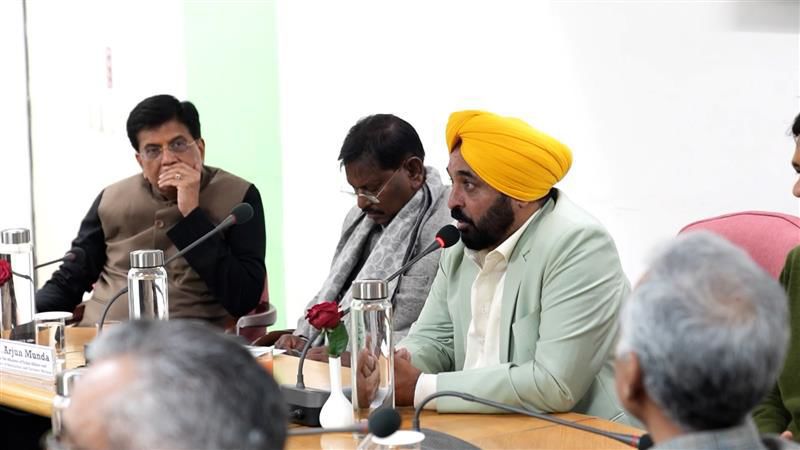
Amritsar, February 11
Farmer unions will meet three Union ministers in Chandigarh on Monday.
Punjab Kisan Mazdoor Sangharsh Committee general secretary Sarvan Singh Pandher said, “A meeting with Union ministers Arjun Munda, Piyush Goyal and Nityanand Rai regarding the demands of farmer unions will take place in Chandigarh on February 12 at 5 pm.”
Recently, the farmer unions had met the three Union ministers in Chandigarh in the presence of Punjab Chief Minister Bhagwant Mann.
Various farmer unions have announced their ‘Dilli Chalo’ protest for February 13.
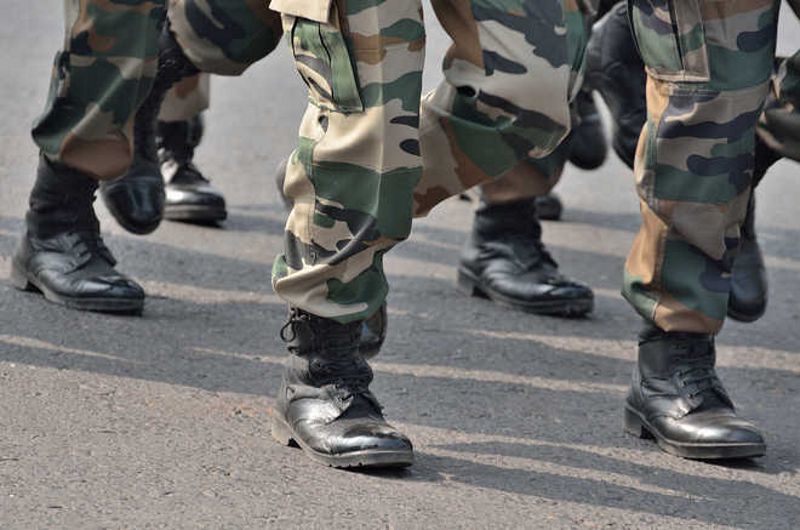
REPORTS regarding the recruitment of skilled Indians for employment in the war-ravaged Israel-Gaza region prompted me to recall Jim Corbett’s stint in the Indian Labour Corps during World War I.
Fired by patriotic fervour, as also the desire to follow in the footsteps of his grandfather and father, Corbett had applied to the War Commission but was turned down as he was nearing 40. However, as the British-French forces were unable to defeat the Germany-led alliance by 1917, ‘word was sent to Delhi for the formation not only of more fighting units for the Western Front but also of Indian Labour Corps…’ (from The Indian Empire at War by George Morton-Jack).
Corbett’s biographer Martin Booth states that ‘being deemed too old to fight, Jim was not considered too old to command and in 1917, he was given a wartime commission as a Captain’, with the caveat to create from scratch the 70 Kumaon Labour Company. ‘The esteem in which he was held in the Kumaon region did not make his job too difficult,’ writes Booth. About 5,000 volunteered, from which Corbett picked the requisite 500.
Realising that he would be exposing them to the most lethal war zone, Corbett visited the home of each volunteer, ‘optimistically and rashly promising to the head of family that he would bring every single individual home safely when the war ended’.
But Corbett’s dilemma surfaced on reaching the Flanders battlefield. Besides facing ‘bullets and bombs’, the personnel were given food that was scanty and inappropriate (tinned beef stew, pork), which they refused outright. Corbett reached out to an adjoining Animal Transport Company with the proposal to barter beef and pork for barley and gram, thus securing ample ingredients for chapatis, dal, khichri, pakoras and even laddoos!
Unlike fellow Indian Army officers who were permitted visits to London on short leave, Corbett chose to remain with his men till Armistice Day. To enforce personal hygiene, he rallied the Kumaonis to salvage suitable material from war rubble to construct a bathroom, a mini-laundry and an improvised incinerator! His men were thus assured of privacy and a warm bath every third day.
Lord Ampthill, who was in charge of the Labour Corps troops fighting in France, visited 70 Kumaon in January 1918. He put this on record: ‘Captain Corbett, who impressed me as a competent and resourceful man, gave me a cheerful account of his Company… men were standing the cold very well and there has been no sickness… I was astonished to see a substantial brick building built by Captain Corbett… walls of red brick and the mortar with nothing more than chalk and rice water.’
On his return to India after the Armistice, Corbett was feted throughout Kumaon as he had brought back all the volunteers, except one, who had died of pneumonia. Befittingly, the names of 1,174 personnel of the Indian Labour Corps are engraved on the National War Memorial in New Delhi.
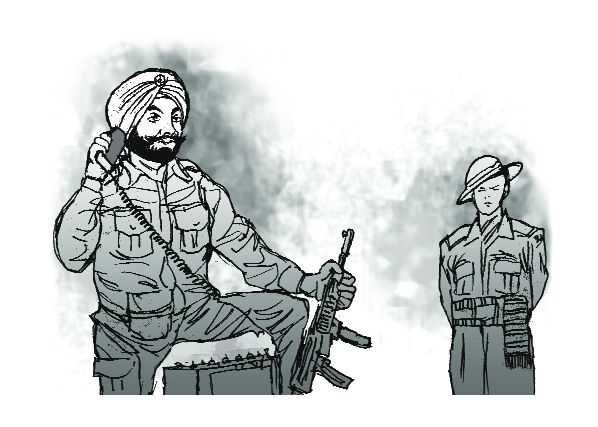
Passing out from any of the academies is a very significant moment and especially so from the Indian Military Academy, as it is here that one’s choice of arms gets finalised. The allocation of arms seems like a surreal moment and has a profound impact on one’s future, deciding whether one would be a tank man, in the artillery, a foot slogger or catering to rations and clothing, etc. With insurgencies raging, the Line of Control being active and the IPKF at its height of deployment in Sri Lanka, there were adequate opportunities for the young officers to earn their spurs and the excitement of being soon in combat was obviously palpable.
My excitement had no limits when I was allotted one of the most prestigious regiments, 5 GR (FF), and within it, the seniormost battalion, 1/5 GR (FF), also fondly called ‘Jethi’. The first thing I understood about the Gorkhas was that there are very few in the Army who comprehend how Gorkha units are numbered. For example, they find it difficult to differentiate 1/5 GR from 5/1 GR, so much so that whenever we were in the station together with 5/1 GR, we had the field post office also confused, with the mail doing the rounds before it reached the desired destination.
Having reached the unit and started the rigorous routine of settling down, I learnt the significance of remembering the numbers of individuals other than their names, as a platoon may have more than a couple of Dhan Bahadur Thapas/Gurungs (slowly, over time, you learn to differentiate between the Thapas and Gurungs, based on the slant of their eyes).
Despite whatever seniority they may achieve, even up to Subedar Major of the unit, their number was the main identity — chappan (56), challis (40), tettees (33), a tradition peculiar to Gorkha battalions.
The realisation of being the only Sikh in the battalion, though being reflective of our secular credentials and however proud I may be of this, did pose a few practical challenges. The items of uniform being peculiar to me being a Sikh officer were not very well known to the sahayak and even the dhobi. Coupled with the language barrier (it being mandatory for a newly commissioned officer to be allotted a sahayak from the interiors, whose understanding of any other knowledge other that Gorkhali was rather elementary, in case not nil), it made the situation rather piquant for me.
So commenced an arduous journey of familiarising the sahayak with items like the pagri and patka (headgear for Sikhs for different occasions), pooney (the procedure of preparing the pagri to be tied around one’s head), the fifti (worn underneath the pagri, reflecting a triangle of a contrasting colour under the folds of the pagri), and thatha (cloth to keep the beard in place). I have covered the main ones. However, there are various ancillaries too. My worst nightmare used to be my sahayak being changed as all the briefing, etc, would have to be done again amid the scanty time available to a young officer.
A recent feature film has extolled the bravery of the Gorkha troops. Suffice it to say that each regiment develops its ethos and principles based on the “genius of the troops” and the “leadership provided by the officers”. This enviable combination has steered the Gorkha regiments to be among the best anywhere. The retention of this bond is essential as it binds the countries of Nepal and India together in a warmer embrace, duly blessed by ‘Maa Durga’.

























































